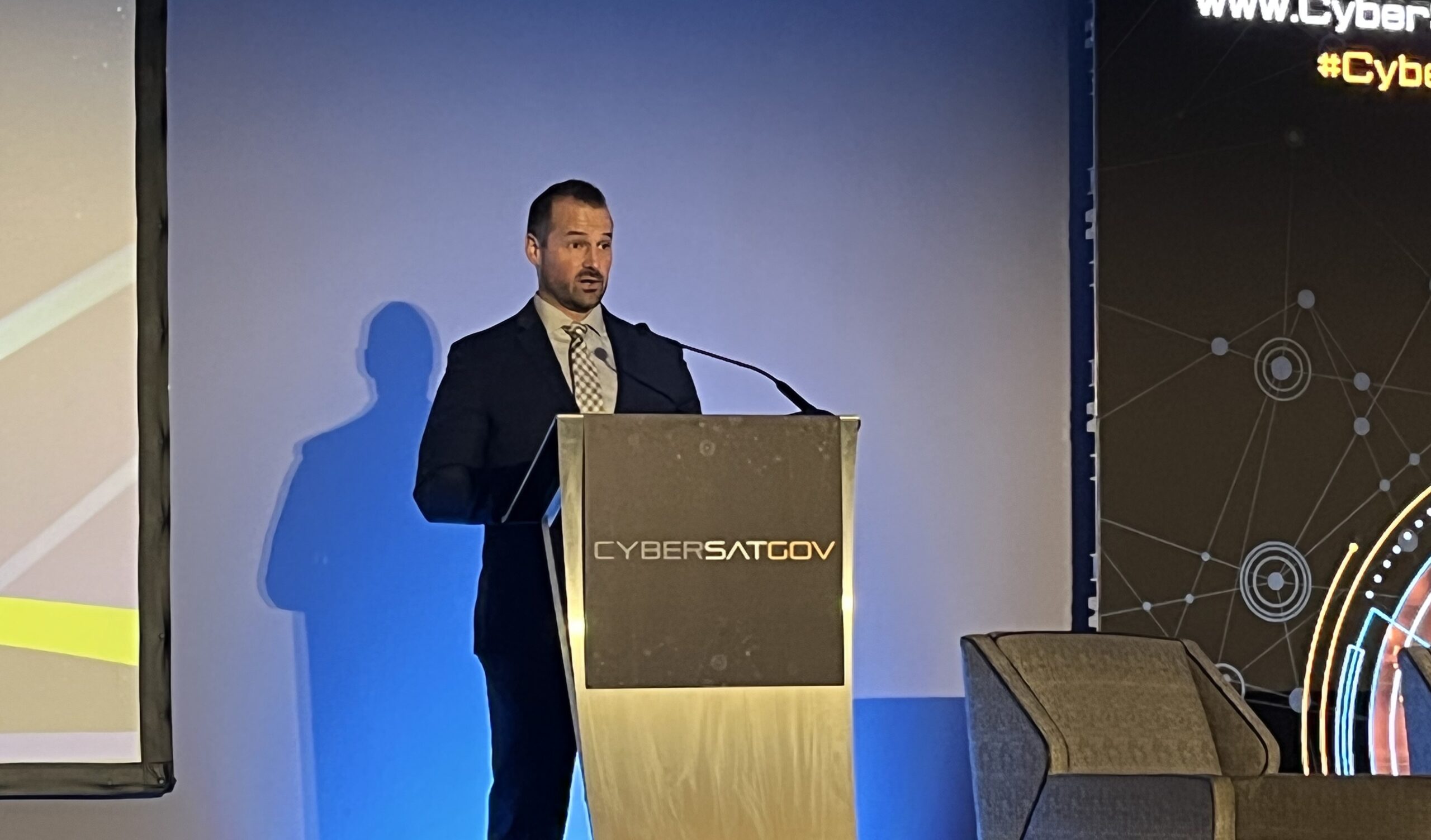Latest News

Dr. Jeremy Banik, deputy director of the NRO’s Commercial Systems Program Office at the CyberSatGov event in Reston, Virginia. Photo: Via Satellite
RESTON, VA — The National Reconnaissance Office (NRO) is close to finishing a request for proposals to acquire commercial hyperspectral satellite data and hopes to release an RFP by the end of the year, Dr. Jeremy Banik, deputy director of the NRO’s Commercial Systems Program Office, said Thursday morning at the CyberSatGov event in Reston, Virginia.
The NRO currently has a targeted focus on acquiring new phenomenologies in commercial imagery and sensing data through the Strategic Commercial Enhancements Broad Agency Announcement (BAA) Framework announced last year. The office previously awarded contracts under the BAA to commercial companies for synthetic aperture radar in January, and radio frequency in September.
“I’m looking forward to exploring [hyperspectral], this emerging phenomenology that’s coming out of the commercial industry, and really helping the government discover ways that we can utilize commercial hyperspectral data. We expect to release that RFP prior to the end of this year,” Banik told attendees.
While hyperspectral imaging collects and processes information from across the electromagnetic spectrum, Banik said the NRO is not interested in buying just a large swath of a single discrete band such as thermal infrared imagery, but wants to buy many individual bands.
The agile study contract approach the NRO is taking is designed with low barriers to entry to make it easier for small, emerging, or non-traditional providers to work with the U.S. government. Banik said this is key to “cast the widest net possible to capture the best coming out of the industry.” For some awardees, it is their first time working with the U.S. government.
This approach aligns with the NRO’s goal with the BAA to move quickly in assessing and acquiring commercial capabilities.
“We can award contracts for the purpose of really continuously assessing and adopting new providers, adopting new phenomenologies, and emerging capabilities coming out of the commercial remote sensing industry. This acquisition process enables us to keep pace with the incredible rate of innovation coming out of the commercial remote sensing industry,” Banik said.
With the commercial radar contracts that were awarded in January, the NRO awarded the contracts just three months after releasing the RFP. “For those of you who have ever done business with the U.S. government, three months from RFP to award is absolutely lightspeed,” he joked.
Banik said working with commercial companies through the BAA process has taught the NRO the importance of transparent communication with industry, and following through on RFPs and contracts.
“This is especially important for these smaller, emerging commercial remote sensing providers that we’re working with who are trying to close investment rounds based on the expectation of future business opportunities,” he said. “We at the NRO very much recognize that our actions affect these industry fields. And in turn, they affect the confidence that industry has and the U.S. government will actually follow through.”
Growing these commercial partnerships in recent years has changed the way the NRO operates, Banik said.
“The market is expanding, competition is growing, and companies are innovating at an incredible pace. The NRO is taking deliberate steps to integrate these emerging capabilities into the U.S. government architecture,” he said. “For the NRO, this really is about partnerships with the commercial remote sensing industry. This commercial data is very valuable. It is absolutely necessary for the NRO to satisfy our mission.”
Stay connected and get ahead with the leading source of industry intel!
Subscribe Now